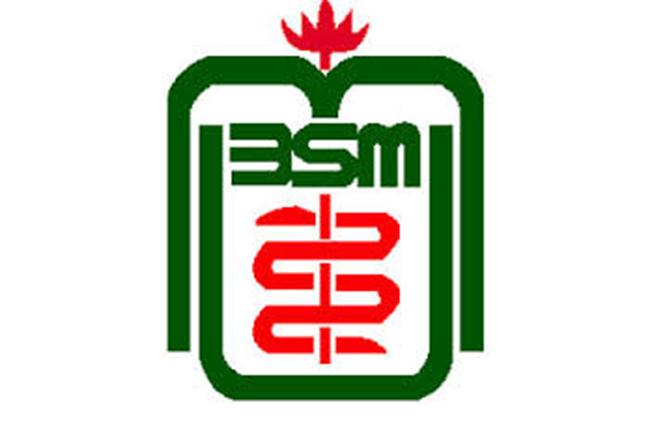Day :
- Pediatric Dentistry
Location: University Hall

Chair
Kengo Torii
Nippon Dental University, Japan

Co-Chair
Kasumi Barouch
Imam Abdulrahman Alfaisal University, Saudi Arabia
Session Introduction
Jiin-Huey Chern Lin
National Cheng-Kung University, Taiwan
Title: Material properties and clinical performance of a fully resorbable, fast healingstimulating calcium-based bone substitute

Biography:
Professor Jiin-Huey Chern Lin received her Ph.D. from Northwestern University Dept. of Biological Materials (Chicago, Illinois). She is Director of Center for Biomaterials Research, National Cheng-Kung University (Tainan, Taiwan) and Technology Founder/CTO of Joy Medical Devices Corp. (Luzhu, Kaohsiung). Professor Chern Lin has published 100+ SCI papers along with 60+ US patents and 90+ non-US patents
Abstract:
A series of synthetic, inorganic, highly osteoconductive and fully resorbable calcium-based bone substitute materials (Ezechbone®) has been developed by a joint research project of National Cheng-Kung University and Joy Medical Devices Corporation of Taiwan. Reported in this presentation include non-clinical performance and clinical follow-ups for different applications. Ezechbone®Granule is a highly porous granular product characterized by its high resorption rate (totally resorbed and replaced by new bone in 3-6 months), while Ezechbone®Cement is featured by its unique non-dispersive behavior when contacting blood/body fluid without the need of any polymeric or other binder additive. This cement can be applied directly after forming a paste or injected into bone void via a minimally invasive procedure. The safety and efficacy of these medical devices are confirmed by a series of chemical/physical characterization and biocompatibility tests such as cytotoxicity, sub-chronic toxicity, intracutaneous reactivity, skin sensitization, ocular irritation, endotoxin test, hemolysis test, genotoxicity and implantation. Animal models for implantation tests include SD rat femur body, New Zealand white rabbit femur condyle and mandible, Lanyu pig mandible, and osteoporotic goat spine. The histopathologic examination indicates that the implant is always intimately integrated with surrounding bone tissues. Majority of Ezechbone® Granule is readily resorbed and replaced by new bone generally in a one-to-one resorption manner as early as 4W post implantation. The early-stage new bone formation is far faster in Ezechbone® Granule group than in autologous group. Clinical case reports include sinus lift, ridge augmentation, frontal bone augmentation and treatment for various types of fractures.
- Dental health
Location: University Room A

Chair
Jiin-Huey Chern Lin
National Cheng-Kung University, Taiwan

Co-Chair
Aleksandar Gulin
University of Zagreb School of Dental Medicine, Croatia
Session Introduction
Jebun Nessa
BSM Medical University, Bangladesh
Title: Effect of tobacco and betel nut on periodontal health in diabetics

Biography:
Jebun Nessa is a founder chairman of Pedodontics Department, Faculty of Dentistry,BSM Medical University, Dhaka, Bangladesh. She passed BDS (Bachelor of Dental Surgery) in 1982 from Dhaka Dental College. In 1987 she got her DDS (Post Graduate Diploma in Dental Surgery) from the University of Dhaka and in 1992 she got her Post Graduate Diploma in Primary Health Care from the university of Western Australia and MPH from the university of Sydney, NSW, Australia. She is currently working as a professor and chairman of Department of Pedodontics at BSM Medical University, Shahbag, Dhaka-1000, Bangladesh.
Abstract:
A hospital-based cross sectional study was undertaken on diabetic patients aged between 19-79 years during the period of April 2004 – December 2004 in the department of Pedodontics (former Preventive and Children Dentistry), Bangabandhu Sheikh Mujib Medical University, Dhaka and at Diabetic Clinic at Rajshahi. This study was conducted to evaluate how tobacco and betel nut along with other study parameters affect periodontal health in diabetics in context of Bangladesh. The study population included 34 males and 47 females. Based on the study results, all study subjects brushed their teeth regularly and mostly with paste and brush. However, consistently the periodontal health in the middle sextants displayed better condition than the posterior sextants. From this view it can be presumed that in the middle sextants, pocket formation is not usually common maybe because the anterior region (middle sextant) is easy to clean and have more opportunity to catch extra exposure to oxygen in comparison to posterior sextants. The present study also showed an interesting and a controversial connection between periodontitis and tobacco and betel nut chewing among targeted diabetic patients. Though little is known about effects of tobacco and betel nut among diabetics, it is almost well established that tobacco and betel nut are harmful to oral health even for people without diabetes. However, a person with diabetes who use tobacco or chew betel nut or both is at much greater/higher risk for periodontal disease than a person who is non-diabetic. Even though this recent evidence supported the role of tobacco as a potent risk factor for the edentulous mouth or in the mouth where less than two or three teeth are present but this study gives a contrast result regarding periodontal health. Present study detected that gum bleeding is totally absent among both the betel nut chewers as well as tobacco users and also they are not insulin dependent whereas most participants of this study who are neither tobacco users nor betel nut chewers are insulin dependent. In this regard, data of the current study indicates that tobacco and betel nut might be potentially helpful to control blood sugar among diabetic cohort. It is perceived that the betel nut has an antibacterial property and so it can suppress the salivary organisms for prolonged betel nut users. In ancient period, for treating bleeding gums in Indian medicine betel nut is also used. In contrast, it might be possible that because of using tobacco blood circulation gum may be hampered that eventually results less or no gum bleeding. Therefore, it requires detecting the association between the higher periodontal index with the use of tobacco and betel nut chewing habits.
Since the sample size in this study was relatively small (81) and not representative, data have to be interpreted with care. Therefore, in order to validate these findings a longitudinal study could be a good option to elucidate this perception more concretely


